Innovation, Research and Development
Innovation, linked to Research and Development, is a material theme for the Company, whose initiatives are developed by several directorates, especially with regard to the culture of innovation.
Besides the culture, significant improvements are being implemented in the processes. We highlight, for example, the creation of the innovation sector within the Business Development Board, whose performance has promoted the insertion of the innovation theme as part of the Company’s Investment Policy concomitant with the creation of the Investment and Innovation Committee, with the objective of accelerating initiatives of interest to the Group. Thus, the Company now allocates a reserve of resources for investment in innovation projects, in addition to the resources traditionally already allocated to Aneel’s regulated R&D program.
As an unfolding of this initiative, Copel implemented, through Public Call CP 0004/2020, the Open Innovation Program with startups, Copel Volt. The Program is an initiative inserted in the innovation strategy aligned to the corporate strategy and aims to take advantage of the synergy of innovation ecosystems and the agility of startups to implement solutions, generating value for Copel’s stakeholders.
In this way, the program aims to give agility in the development of new products and services for the implementation of new businesses and the insertion in new markets. Open innovation is a model that companies are increasingly adopting in response to a world increasingly characterized by global business entities and open sharing of information.
Copel’s proposal aims to increase and accelerate these efforts, boosting the ecosystem in order to solve technical problems for the corporation and supply the required capabilities. The Company’s actions, related to innovation, are directly linked to the Sustainable Development Goals (SDGs), proposed by the UN, of which Copel is a signatory.
Moreover, Copel signed a technical cooperation agreement with the Brazilian Agency for Industrial Development (ABDI) for the use of a technological sandbox, or living laboratory of technologies for Smart Cities, called Living Lab. The space, which also has the partnership of the Itaipu Technological Park (PTI), is located in the city of Foz do Iguaçu and will serve to implement actions aimed at the public interest, enabling the adoption of sustainable policies and the dissemination of innovative business models in urban mobility and smart cities, promoting the entire associated production chain.
The structures of ABDI’s demonstration environments, in the State of Paraná, will be available for Copel to implement and test technological solutions related to Smart Cities, either through direct actions, or indirectly, via partners or startups selected in the Open Innovation Program.
Innovation
Innovation is one of Copel’s values in its strategic reference. In the corporate strategic guidelines, there is the need to foster innovation as a lever for growth, increase customer satisfaction and loyalty, and improve processes.
Considering the theme innovation as a key factor for sustained growth, viability and increased well-being and development of society, innovation at Copel is no longer a matter only for the research and development areas and has become a pursuit of the entire Company. Copel sees clearly the importance of innovation to remain active and strong in the markets where it operates.

Research and Development
Copel has had a consolidated program aimed at Research and Development (R&D) projects since 2000, which allocates resources for scientific and technological research projects in accordance with the criteria established by the National Agency of Electrical Energy – ANEEL, prioritizing the achievement of results of practical application, with a focus on the creation and improvement of products, processes, methodologies and techniques.

Innovation, Research and Development - Environmental Dimension
In the pursuit of excellence in socio-environmental performance and in line with the best ESG practices, Copel also encourages the development of innovation, research and development projects that contribute to the expansion and operation of its ventures being increasingly sustainable.
Below are some of the projects already developed or in progress that exemplify Copel’s research, development and innovation actions in the socio-environmental sphere.
Electric barrier for fish at Colíder HPP
The operation of hydropower plants on rivers full of fish, such as the rivers of the Amazon Basin, needs to be done with all care and respect for the environment. As a hydroelectric power plant is installed in the river, it is natural for fish to approach it. A fish can even enter the hydraulic circuit (the structure of the plant where the water, coming from the reservoir, is taken to the turbines and then leaves for the river) and end up hitting the turbine.
Copel GeT has a hydroelectric plant installed in the Amazon Basin, the Colíder HPP, located on the Teles Pires River, Mato Grosso. Considering the risks to fish in accessing the turbines of HPP Colíder, Copel GeT preventively installed electrical barriers in the hydraulic circuit of the plant, near the water outlet that passes through the turbines. This type of barrier minimizes risks to fish, as it drastically reduces their access to the turbines.
The electric barrier works by means of large electrodes that are positioned at the outlet of the hydraulic circuit and produce an electromagnetic field that disturbs fish that come close, causing almost all of them to move away from the site. Thus, the chance of fish approaching the turbines is greatly reduced. As they are not physical barriers that could interfere with the safe operation of the plant, these electric barriers can be left on non-stop, increasing safety for the fish.
The electrical barrier of the Colíder HPP plays a very important role especially during maintenance maneuvers of the plant’s turbines, when the turbines are normally stopped, the hydraulic circuit is closed and needs to be dried. It is in this closing of the hydraulic circuit that fish can be trapped inside the turbine, requiring their rescue by specialized teams.In Amazonian rivers, the amount of trapped fish can be enormous, increasing the risk of activities.The electric barriers installed at HPP Colíder prevent the vast majority of fish from entering the hydraulic circuit, making these maintenance actions much safer for the animals.
Fish Transposition System (STP) at UHE Colíder
The Fish Transposition System (STP) at HPP Colíder was conceived during the Environmental Impact Study (EIA) of the enterprise and designed to allow a wide variety of fish species to transpose it, thus allowing gene flow between populations downstream and upstream of the dam. In order to cater for the large fish fauna that exists in this stretch of the Teles Pires river basin, the STP of UHE Colíder is composed of one of the largest fish ladders in the world, measuring 692.96 meters, of the vertical slot type, with sequences of alternating parapets and rest tanks in the curves of the structure; an inlet channel connecting the ladder to the plant’s tailrace channel; outlet channel connecting the ladder to the reservoir; and an auxiliary water system, used periodically to increase the ladder’s attractiveness to fish. In addition, the STP has a viewfinder in the exit channel, through which it is possible to observe the fish that pass by.
The monitoring of fish using the STP of UHE Colíder is done in two main ways:
- Through the STP window: a specialized team observes, identifies and counts the fish that pass through the window in two daily shifts;
- By marking and registering with PIT-TAG, a monitoring method already established and applied in other STPs in South America, which uses RFID technology. The PIT-TAG is a tag in the shape of a small capsule with a chip and identification, and can be applied to fish of different sizes. The STP at UHE Colíder has antennas that capture the passage of marked fish, the data being analyzed by the plant’s Fish Monitoring Program.
To learn more about STP, visit the UHE Colíder website.
Deflector on the spillway of HPP Colíder
The Total Dissolved Gases (TDG) is a measure of the partial pressures of all gases dissolved in water (mainly oxygen and nitrogen) which, at high values (supersaturation), can cause the so-called “bubble disease” in fish – when there is formation of gas bubbles in the blood and tissues of the animals. In Brazil, there is no specific legislation on the admissible concentration of TDG in bodies of water after spills.
Upon identifying the problem downstream of the Colíder Hydroelectric Power Plant dam, in Mato Grosso, in 2017, Copel GeT began studies on the subject and hired the University of Iowa/IIHR (USA) and Lactec to carry out the research. The proposed solution was the construction of a deflector block – a kind of concrete step built in the spillway span that would prevent air bubbles from being dragged into the deepest region of the water dissipation basin, reducing the dissolution and incorporation of gases into the water and, consequently, the percentage of TDG that could affect the fish. The project, unprecedented in Brazil and carried out by a technical team from Copel GeT, culminated in the construction of deflectors on the spillway of Usina Colíder – completed at the end of 2021 and with positive results already attested.
Through the R&D program entitled Methodology for Computational Modeling of TDG in Water in Effluent Flows from Spillways (P&D ANEEL PD-06491-0541/2019) a computational modeling methodology was developed to simulate the process of transport of air bubbles in water and the process of dissolution and transport of gases that occur during the operation of a spillway, estimating the percentage of TDG that can be formed before and after the design of a deflector. GeT invested BRL 8.9 million in this R&D, which involved 44,000 hours of work by the professionals involved in the study – 22 from Lactec and six from Copel. So far, seven technical articles have been published that deal with the studies carried out within the scope of R&D and the successful project of the deflectors of the Colíder hydroelectric plant, contributing to the design of future plants, mainly in the Amazon basin, to contemplate the solution.
Styrofoam feeder beetles
The team at Copel’s Ichthyology Experimental Studies Station is developing an unprecedented project in Brazil to raise beetles that feed on styrofoam and wheat bran to enrich the diet of fish raised in captivity to repopulate the power plants’ reservoirs.
The project, presented in the Inov+ GeT program, seeks, in an unconventional and low-cost way, to have a high-quality alternative for fish food that can even help in the biodegradation of Styrofoam, which is a common waste nowadays and with characteristics that make recycling difficult.
The breeding of beetles of the genus Tenebrio has already begun at the Station. As the production of larvae increases, they are used to replace part of the industrialized feed currently used in fish farming. Currently, an average of almost 2 tons of feed is consumed per year. There are scientific papers published regarding the nutritional value of Tenebrio larvae, which are a rich source of protein, and their use as a substitute for other ingredients used in fish feed. So, the focus of the project is the study of the most appropriate management for this use. For this, selection tests of breeding beetles and the ideal age of the larvae will be carried out to achieve the best feed conversion rate and the best production of larvae. The breeding method will also be improved, to assess the size of the population that we can maintain with the current space and how much styrofoam can be consumed.



